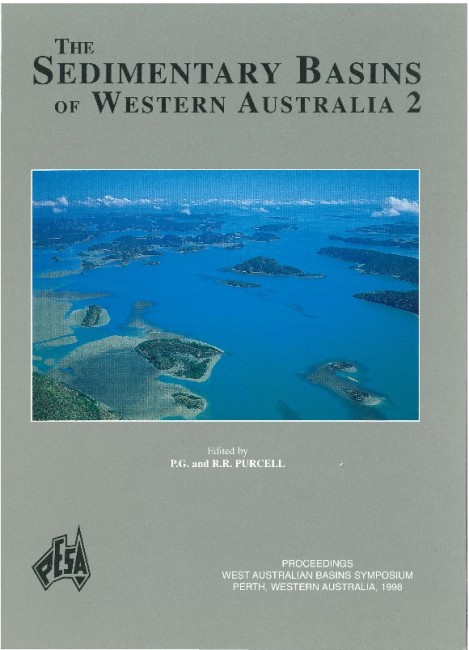Publication Name: The Sedimentary Basins of WA
Authors: Grant K. Ellis
Publication Volume: 2
Date Published: December 1998
Number of Pages: 25
Reference Type: Book Section
Abstract:
An understanding of fluid flow, diagenesis and hydrocarbon entrapment history in the Middle Jurassic Plover Formation intersected in Naga 1, Hydra 1 and Basilisk 1A, on the Sahul Platform of the Bonaparte Basin, has been developed from an integrated study of petrography, fluid inclusion hydrocarbon petrography, geochemistry and core analysis of selected reservoir samples, in conjunction with qualitative wireline log analysis.In the early Tertiary, silica-rich, hydrocarboncharged fluid migrated from the Upper Jurassic source sediments in the Flamingo Syncline north and northeast through the Plover Formation carrier beds to closed structures on the Sahul Platform. The complexity of the structural configuration of the Naga closure, on the southwestern margin of the Sahul Platform, prevented access of hydrocarbon-charged fluids to the top of the Plover Formation, resulting in entrapment of oil and some gas below an intra-Plover Formation claystone. Further to the north at the
Hydra closure, similar structural complexity limited access of fluids to the top of the Plover Formation reservoir and remoteness from the source kitchen resulted in limited fluid migration into the area. By contrast, the relatively simple closure at Basilisk, on the southern margin of the Sahul Platform, enabled ready access and entrapment of oil and gas in the uppermost sandstone of the Plover Formation. The entrapment of oil inhibited quartz overgrowth development and contributed to secondary porosity and enhanced permeability.
Late Tertiary tectonism resulted in preferential dilation of north-south faults and the vertical leakage of hydrocarbons from the Naga closure. In the Basilisk closure, wrenching along the east-west bounding fault altered the geometry of the structure. The absence of north-south faults resulted in lateral redistribution and leakage of oil and gas rather than vertical leakage.


